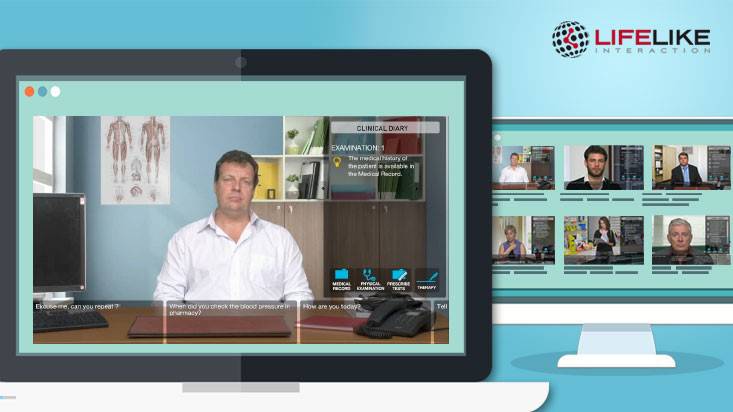Patient interaction training simulators for problem-based learning

Being a doctor is about more than clinical skills and medical knowledge alone. Doctors also need to be able to communicate effectively with patients during what’s often a very difficult time in their lives. Doctors’ ability to do so can affect the patient’s adherence to treatment recommendations.
It’s not just what the physician tells the patient. It’s also how the physician says it and is able to interpret body language to assess if the patient’s digesting important information—or if that information needs to be repeated in a different way. These softer skills can affect how well patients follow their care plan.
For that reason, doctors and students need ways to practice not just their clinical skills but also the human-interaction side of treating patients. So it’s exciting that today’s technology advancements give doctors more ways to practice those soft skills.
Training simulators for healthcare built on a problem-based learning approach can now offer very realistic patient interactions. Physicians and students can experience totally immersive, simulated patient visits in real time so they can try out different therapeutic recommendations as well as practice negotiating and reading patients’ nonverbal cues.
For example, our Lifelike interaction simulators for healthcare (delivered through a subscription-based and off-the-shelf library) use high-definition prerecordings of actors and take advantage of interactive digital cinema and artificial intelligence (AI) to mimic having a real person in front of you.
In the past, simulators used cartoons or avatars as patients, which weren’t able to provide the same level of experience reading a person’s body language that simulators using real people as patients can provide. They were also easier to cheat on because they couldn’t include the types of algorithms and massive number of possibilities that AI enables.
Today’s highly realistic patient interaction simulators help doctors and students get better at being able to influence patients positively. And improved performance in patient communications can lead to improved patient outcomes. Lifelike simulators also provide a safe environment to experiment with different clinical therapies. In other words, they help doctors and students be better prepared for the various patient scenarios they will face throughout their career.
At Lifelike, we’re very proud to be a Microsoft partner and to be able to take advantage of AI and cloud technologies such as Microsoft Azure to deliver our rich library of healthcare simulators. And feel free to reach out with any comments or questions via email, Facebook, or Twitter.




